First look: Intel's Nikiski see-through notebook
Launching with Windows 7 first, Ultrabook later
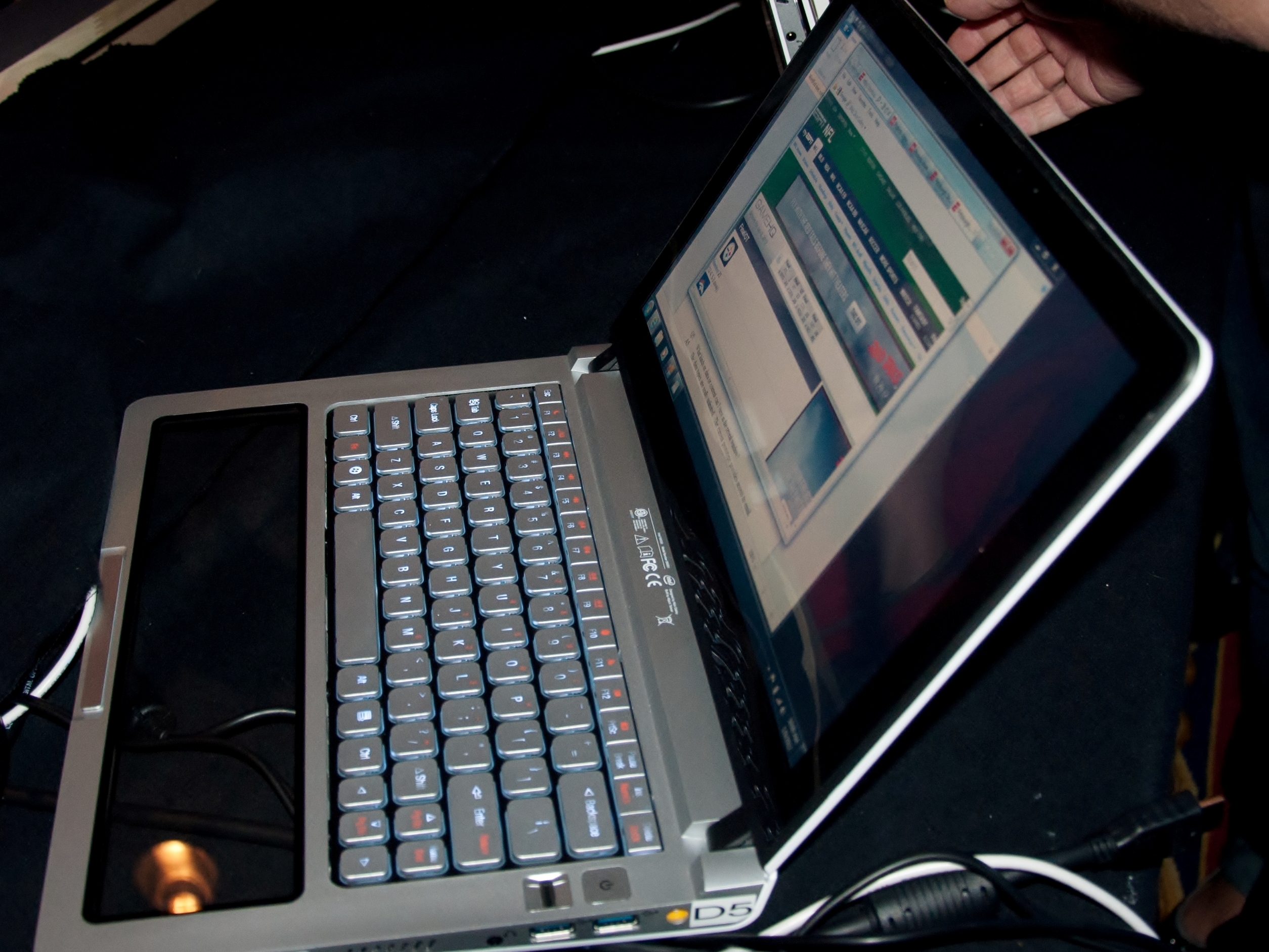
The concept notebook with a huge transparent glass palm rest that doubles as a touchscreen that Intel showed off at Computex last year is now a prototype. And it's going to be a shipping product before Windows 8 comes out.
Use the Nikiski like a laptop, with a see-through glass touch pad that stretches almost the whole width of the base.
Touch it with a finger and it's a trackpad, put your palms down on it to type and the larger base of your hand doesn't register as a touch so you still get a wrist rest.
Close it, turn it over and the touch pad turns into a touchscreen layer to enable you to browse a slimline view of key information such as new emails.
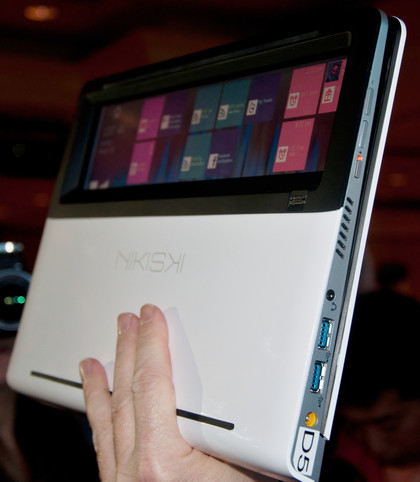
AT A GLANCE: See if you have new messages, look up your next meeting or check Facebook without opening the notebook
Despite the Metro look of the notification tiles in the interface that appears through the bottom of this glass touchpad, the prototype isn't running Windows 8, and the first version will launch this year running Windows 7.
"We're hoping to get the product out sooner and then we'll move to Windows 8," Intel's Peter Adamson told TechRadar. Although he didn't give a release date, to make it worthwhile shipping before Windows 8 comes along, we're expecting to see the first model by spring or early summer.
Are you a pro? Subscribe to our newsletter
Sign up to the TechRadar Pro newsletter to get all the top news, opinion, features and guidance your business needs to succeed!
Some rumours put Intel's next generation Ivy Bridge chips on the market as soon as April or May, although we don't know what processor Nikiski will have.
Not an Ultrabook yet
The white prototype Nikiski device will not be an Ultrabook, according to Adamson. An Ultrabook version, more like the slim black prototype shown at Computex, will follow later in the year.
This first Nikiski will be priced "close to $699."
We spotted USB 3 ports, a memory card slot and an HDMI connector on the sides of the wedge-shaped chassis.
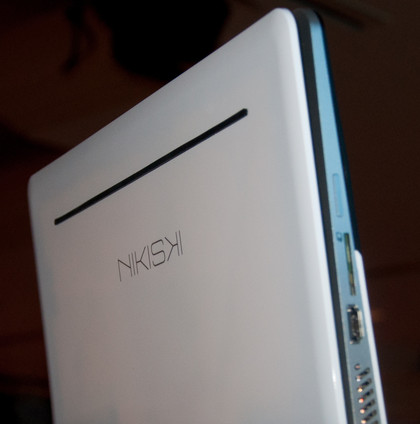
NOT ULTRABOOK: The first Nikiski model won't be an Ultrabook, although it will have the instant-on and long battery life associated with Intel's powerful laptop-tablet hybrids
Adamson is responsible for the Nikiski app, and was guarded about the final features - currently it shows details from your calendar, email, Facebook news feed and more, with Metro-style notification numbers for new messages since you last looked at the app.
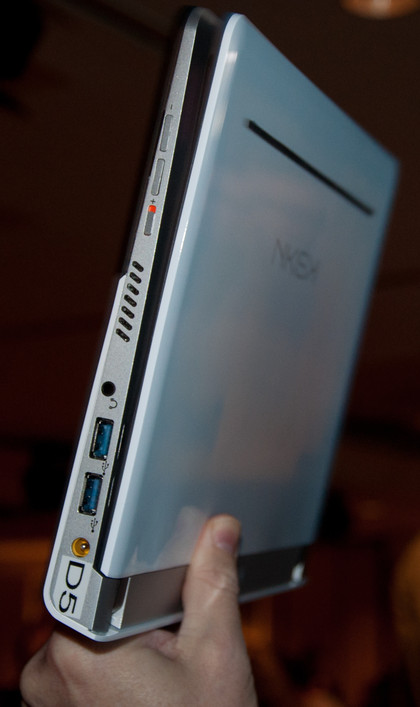
USB 3: Power, USB 3 ports, a headphone jack and volume controls run down one side of the Nikiski
There's a Home button to get back to the top level and a Settings button that enables you to change options such as the font size, plus icons showing details like the time and network connectivity.
You can turn on the slimline view by swiping your finger over the touch pad to wake it up, or tapping the power button without opening the lid.
It appears to use the same lid closing and opening sensors that most laptops use to hibernate (and a few use to turn on automatically) to switch between the overview and the same information in a standard desktop view.
So if you select an email or a web page through the bottom of the notebook and you can't see enough detail (although as Adamson notes "you've got a lot more real estate than on a phone"), you can open the lid to see the message or web page full screen without having to find it again.
Touchscreens add to the cost of a notebook and they also take more power, "but we've done a lot of work to keep the power usage low" Adamson told us. To save even more power, the backlight for the two-thirds of the screen you can't see when the lid is shut will turn off automatically in the final version. Intel hasn't done that for the prototypes, as you can see by the backlight shining through the closed case.
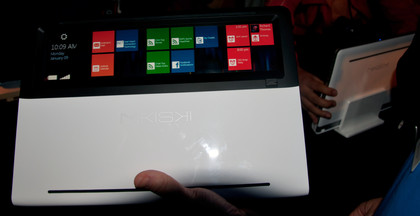
TWO THIRDS: Intel plans to turn off the backlight for the area of the screen that's hidden when the lid is closed - you can see the glow of the full screen in the Nikiski at the right
Intel only
Intel's Mooley Eden jokingly warned competitors not to copy the palm rejection "because we've already patented it".
That doesn't compete with the 'unintentional touch rejection' patent Microsoft already has, because that's about Windows interpreting your touch to see if it's deliberate or an accident.
Nor does it compete with any of the other touch rejection patents held by various technology companies, Adamson told us.
Here it's all done by the PC firmware and Windows never sees the touch of your palms. "We intercept the touch before Windows ever sees it."
That takes a lot of work, he explained, because "when you first touch it, your palm does look like a finger [to the PC]" but he says the system can reliably tell the difference, so you won't be randomly moving the mouse while you're typing.
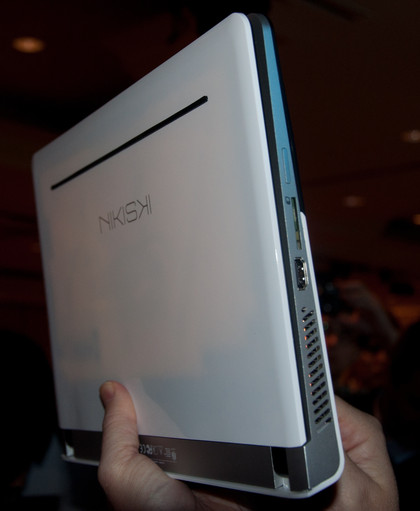
THE WEDGE: The angle of the chassis leaves room for an HDMI port and an SD card socket as well as giving the keyboard a reasonable typing angle
Mary (Twitter, Google+, website) started her career at Future Publishing, saw the AOL meltdown first hand the first time around when she ran the AOL UK computing channel, and she's been a freelance tech writer for over a decade. She's used every version of Windows and Office released, and every smartphone too, but she's still looking for the perfect tablet. Yes, she really does have USB earrings.